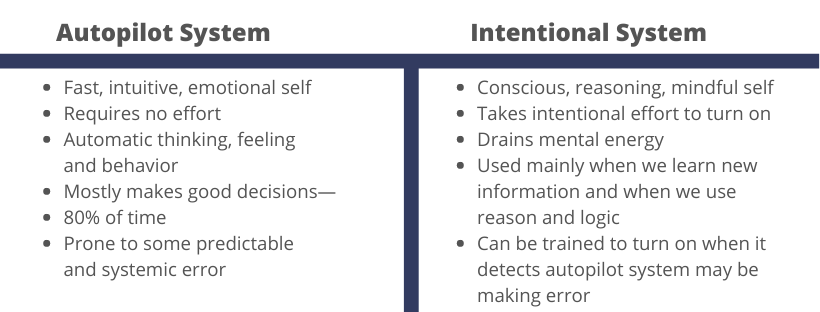Entrepreneur’s Organization is a global network of over 13,000 business owners. Learn how EO New Jersey helps over 100 business owners grow.
Contributed by Bill Lyons, CEO and president of Griffin Funding.
Along with the excitement that comes with a new decade, 2020 brings a lot of speculation on the economy, including a focus on what we call recession proofing. While business owners don’t know for sure if a recession will hit in the near future, the need for ensuring your business can weather the storm is real and growing.
Bill Lyons from Griffin Funding, says, “Make financial moves to stay nimble.”
The more nimble your ship is, the quicker you can make decisions and implement change throughout the culture and organization. If you want to recession-proof your business, ensure that you are nimble. Here are my recommendations:
Be proactive about taxes.
One of the biggest expenses a business owner can incur are taxes. It’s best to be prepared and have a plan in place to minimize what you’ll end up owing.
If you don’t have an internal CFO who is forecasting, budgeting, managing lines of credit and managing cash flow, consider hiring an outsourced part-time CFO or working with a proactive CPA (not reactive) who can help you plan throughout the year.
I also recommend getting your CPA financials quarterly and sitting down to plan and strategize.
Finance to keep you recession-proof.
In addition to building cash up on your balance sheet, apply for a low-interest line of credit with your local community bank so you can utilize it for growth, acquisitions or for a period when you need to pivot to a new marketing plan or a new product. A line of credit and cash together will put you in a position of strength and provide you the fuel you need to navigate through a recession.
Don’t wait to apply for a bank loan until you need it because more often than not you won’t get approved. Banks most often will lend you money only when you don’t need it.
Navigate a recession.
If you’re a giant cruise ship you could be a sitting duck if a recession comes. By the time you turn the wheel, a year may pass before the rudder starts to turn the ship in the new direction it needs to go. If you are a big fat cruise ship with lots of overhead, put a plan in place to be able to transform it into a nimble ship quickly that can execute. If that isn’t an option then put some nimble ships around you (small independent ancillary businesses) that can either protect you or diversify you. Do this especially if you are in a business that is sensitive to the market and outside forces.
Ryan Shortill from Positive Adventures, suggests, “Build a strong team and make adjustments to increase flexibility.”
Not knowing how much longer the economy will march on, we see the potential for a challenging year ahead.
Examine your overhead and make changes as needed.
Here are some questions to get you started:
- Can you make one division of your company recession-proof so you are more shored up than most?
- How about the other portion of your business? Is it sensitive to business spending? If so, a reduction from others may spell a reduction for you, so you have to tailor an agile team headed into the new year.
Strengthen your team and ensure employee retention.
- Consider adding or repositioning staff: This is part of the strategy to make sure you have a division in your company that is recession-proof.
- Increase employee appreciation: There are many ways to show employee appreciation. From the everyday “job well done” recognition, to giving your staff space and autonomy to accomplish their tasks, to sales bonuses, to appreciation gatherings. These should all be in the mix to keep your team energized.
- Find ways to improve company culture through CSR or experiential retreats: Now more than ever there is a push for more conscious ways of doing business, commonly known as CSR—corporate social responsibility. Companies also know they can attract and retain more talent with a culture that values workplace wellness and a general feel that an individual can make a difference! Corporate retreats often fall into the same routine, making them feel more like work and less like a retreat. Give your employees an experience they will never forget while taking advantage of this time out of the office with their colleagues.
Lauren Zerweck, marketing consultant, advises, “Get creative with your communications and marketing.”
Keep up on your marketing efforts.
When a business is feeling pressure to cut their spending, they often start by reducing the marketing budget. Business owners may think, “Did this campaign bring in sales?” The issue here is sales and marketing are measured with different metrics, so to deem marketing activities unsuccessful based on sales, doesn’t actually make sense.
If your budget is tight, however, it does make sense to be more creative and cut back in areas based on marketing metrics such as web traffic and social reach. There are low-cost options and there are smart and creative ways to pair down as long as you continue to track progress and adjust.
Focus on customer communications.
This is no time to lose out on your regular customers, it’s time to strengthen your relationships.
- Improve communications with customers: While staying relevant in your customer’s minds through digital marketing is great, having those quarterly check-ins or face-to-face coffee catch-ups are essential—especially with your top clients. This allows you to really know your clients business and anticipate their needs.
- Under promise and over deliver: The importance of stellar customer service cannot be stressed enough in times of recession. The under-promise, over-deliver strategy means that you are always exceeding their expectations rather than setting them high and never being able to meet them. This can be done in a lot of little ways. Everything from following up to ensure all needs were met, to showing appreciation through thank you cards. This will keep them as your loyal customers as well as spread the word resulting in new referral business.
- Network, network, network: Building trust is one of the hardest hurdles when courting a new client. Especially when you may only have a single phone call to establish that trust. Whether you have met your prospective client online or in person, you need to make sure they get a good feel for who you are, what you do and how to do business.
Entrepreneur’s Organization is a global network of over 13,000 business owners. Learn how EO New Jersey helps over 100 business owners grow.
This post was originally published on the EO Global Octane Blog.











